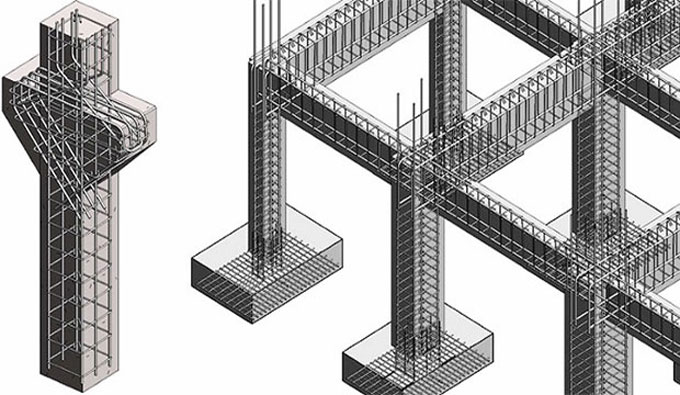
Types of Reinforced Concrete
By applying fibers in cement, it becomes possible to control the cracking characteristics and minimize penetrability. The encompassing concrete safeguards the steel applied for reinforcement. Glass fiber reinforced concrete is suitable for architectural products and steel fibers are frequently utilized for paving and inside tunnels.
Given below, the details about several types of Reinforced Concrete :-
Glass Fiber Reinforced Concrete (GFRC): Glass fiber reinforced concrete is very effective for concrete reinforcement, other than steel. GFRC is being fabricated into big panels with a easy configuration or into composite shapes with special systems. Primarily, GFRC elements were fastened directly with the buildings through metal studs. It is found that GFRC changes greatly as a result of the direct anchors are being substituted with slip anchors. Different structures apply GFRC for different facing like ceramic tiles, bricks, and architectural purposes.
Steel Fiber Reinforced Concrete (SFRC): Steel fiber reinforced concrete belongs to a composite material that can be sprinkled. It comprises of hydraulic cements with steel fibers which are scattered indiscriminately and contain a rectangular cross-section.
The steel fibers reinforce concrete is suitable for resisting tensile cracking. The flexural strength of fiber reinforced concrete is superior as compared to the un-reinforced concrete. Reinforcement of concrete with steel fibers is isotropic in nature that makes the resistance strength greater against fracture, disintegration, and fatigue.
Steel fiber reinforced concrete is capable of resisting light and heavy loads.
The following types of fibers are suitable for concrete reinforcement
Natural fiber reinforced concrete (NFRC) comprises of cellulose fibers which are prepared from pine trees. The recycled carpet waste has been effectively utilized for concrete reinforcement along with the waste car-pet fibers.
Polypropylene Fiber Rein-forced (PFR) concrete: Polypropylene belongs to an inexpensive and stable polymer that is frequently utilized owing to its strong resistance capacity against chemical reactions.
Asbestos Fibers: These fibers are inexpensive and add mechanical, chemical and thermal resistance strength to the cement, although the asbestos fiber reinforced concrete seems to contain low impact strength.
Carbon Fibers: These fibers are mostly recognized because of their very high modulus of elasticity and flexural strength. Features like strength and stiffness are greater as compared to those of steel fibers, though they are more vulnerable to damage.
Engineered Cementitious Composite (ECC): A fiber reinforced concrete is gaining popularity currently that is known as Engineered Cementitious Composite (ECC). It is known that this concrete is 40 % lighter as compared to normal concrete, resistance to cracking surpasses 500 times, and strain hardening goes beyond various percent strain.
As a result, the ductility becomes considerably higher as compared to normal concrete. It is also defined as bendable concrete as it can be simply molded and shaped. It can self-repair small cracks by making the reaction with carbondioxide and rainwater to add more strength to concrete.


